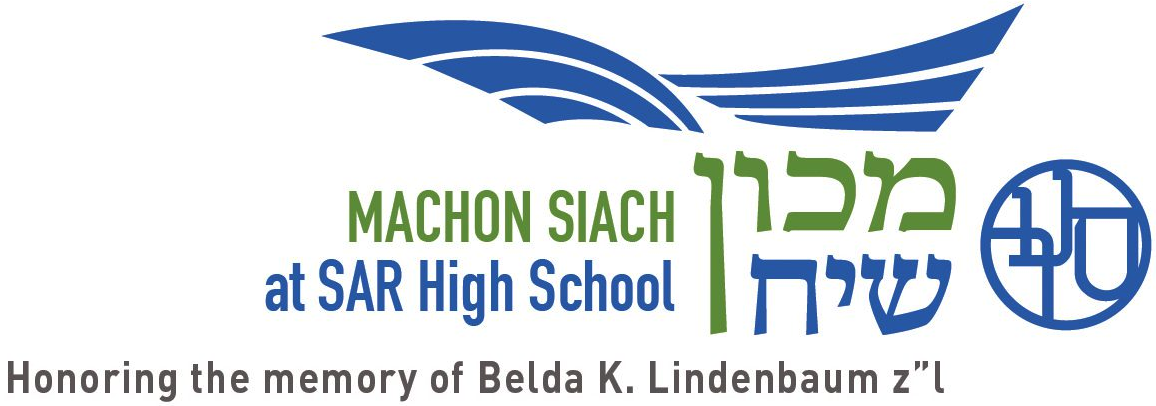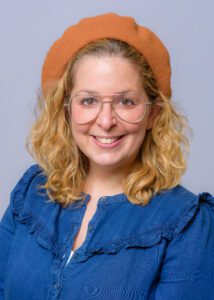
Cross-cultural Religious Literacy is not a threat to Modern Orthodox Jews, in the 21st Century it is an Opportunity
Jewish educators often lament how little time we have to teach Torah. There are simply not enough hours in the day and not enough years in the yeshiva day school system for our students to learn everything they need to know – to practice, to feel, to live, to love a full Jewish life. So it might seem obvious that we would not allocate precious time to learning about other religions. 1 It is not my purpose here to address the halakhic issues in this area. Yet, SAR High School offers an elective course on cross-cultural religious literacy because we believe that the study of other systems of belief and practice offers value to Modern Orthodox students. I can offer three reasons why.
First, cross-cultural religious literacy makes us more discerning humans and more effective advocates for the Jewish people. We live in unprecedented times when the boundaries between religions, cultures, races, and nations are more porous than ever. Even as social media nourish echo chambers and reinforces entrenched beliefs, the very same technologies expose our young people to their counterparts from vastly different backgrounds. Curiosity among Arab youth in light of the Abraham Accords prompts their learning about Jews , and many of our Jewish students encounter Mormons, Muslims, Marxists, and others via TikTok and Youtube. Despite these media, our exposure to one another is fairly fragmentary. We need to teach our children–and perhaps ourselves as well–to be sensitive and informed media consumers: whether we view posts on Instagram and Facebook, read articles in The New York Times, or watch cable news pundits. We must identify our personal prejudices and their sources so we do not fall into the trap of confirmation bias and exacerbate the already polarized media landscape. By carrying a basic knowledge of other traditions and ensuring that we hear insider voices, we recognize that no one individual speaks for the whole of a religious community. Likewise, with knowledge of how others see the world, we can correct dangerous misconceptions about our own religious community and advocate effectively for the Jewish people.
Second, the study of other faith traditions can, perhaps ironically, deepen commitment to our own. When we use our minds to step outside our own reality – Plato’s cave of our own religious discourse and the daled amot of our assumptions – we see ourselves afresh and come to appreciate our practice anew. When someone says the word tefillah, prayer, a myriad of impressions and images flood our minds: sitting in shul, finding time thrice daily, the meditation of the amidah, the rich liturgy of the siddur, the collective experience of minyan, orientation towards mizrach, voices quiet or loud, singing, chanting, listening, reading. This is the world of prayer we know. I, like many of you, grew up in this world and its beauty, but the challenges of keeping the quotidian fresh are all too familiar. By studying some of the rituals of Islamic prayer, for example, the intense and deliberate body postures, repetitive phrases, minimalist liturgy, daily prayer schedule, mosque architecture, and qibla practice (orientation towards Mecca) as well as the experience of Muslims who observe these prayers, we come to think more deeply about Jewish prayer. Chazal made choices that profoundly shape our tefillot, and when I see the paths taken by other faith traditions, I notice things that I heretofore took for granted; I see what once felt mundane and routine as unique and beautiful. Becoming momentary outsiders to one’s own faith tradition can jolt us out of complacency and reinvigorate our practice.
Finally, as Modern Orthodox educators, we aim to prepare our students to be citizens of the world. There are approximately 2.3 billion Christians, 1.8 billion Muslims, 1.2 billion Hindus, and 507 million Buddhists. There are 15 million Jews. To understand the modern world outside our relatively small community, to comprehend the complex social and political climates of different cultures and countries, to add depth to the conversation around the Israeli-Paletsinian conflict and other global affairs, we need to understand the role religion plays in people’s lives. While it is helpful to know the “facts” of religion – basic history, major theologies and practices – we should also understand others’ experiences, which for the vast majority of the global population, is deeply shaped by religion. By complicating our assumptions, we approach people with our posture rooted in openness and empathy for their diverse religious, social, and cultural experiences. Importantly, none of this need come at the expense of our dedication to and pride in our faith, tradition, or level of observance.
My senior elective at SAR High School, “Jewish Encounters with Other Faiths,” asks students to consider what it means to be insiders in our own faith tradition and outsiders to others as we survey the history of the academic study of religion. We examine a variety of Jewish theological approaches to other faiths and consider which may align with our Modern Orthodox community. As we delve into the histories, theologies, and practices of Christianity and Islam, we take a phenomenological approach – bracketing our judgements and seeking to understand the experience of faith from the perspective of the believer – by hearing the story that believers themselves tell. Our course tagline is “empathy without advocacy or debunking.” We aim to cultivate a posture of humility, which we initiate by assuming that we do not know much about the “other.” Learning with this approach does not mean that we abandon our pride in and commitment to Torah Judaism nor that we jettison religious red lines or become moral relativists. Rather, our starting point is an attempt to understand without responding from a place of threat or religious uncertainty. Each faith community is, after all, as Rav Joseph B. Soloveitchik stated in his essay “Confrontation,” “endowed with intrinsic worth, which must be viewed against its own meta-historical backdrop without relating to the framework of another faith community.”
Cross-cultural religious literacy like that taught at SAR High School allows students to see similarities in religious practices and beliefs as bolstering their identities while learning to appreciate the beauty of our unique ways. Our ability to love what makes us different, according to Lord Rabbi Jonathan Sacks, endows human beings with dignity.
- 1It is not my purpose here to address the halakhic issues in this area.



